Post by jj0 on Nov 17, 2020 20:37:03 GMT
The kernels of the Maxi and VIC-20 (henceforth referred to as Maxi) support OTG access, allowing access from a PC USB port to a command line shell over a virtual serial port and the internal nanda/nandb storage as 'virtual' USB Mass Storage devices (aka USB sticks).
The attached fake firmware file enables this so you can e.g.:
USE THIS AT YOUR OWN RISK - I've tested in on my Maxi without issues but your results might vary. Ensure that the first thing you do is to make a backup of your nanda and nandb.
To run this:
Once you run it, a number of things should happen:
Sometimes the virtual serial port doesn't quite catch all start messages so you might see some garbled text.
To quit the OTG mode and return to the Carousel you have to (safely) eject each Mass Storage device, the command shell will show how many you have left to eject: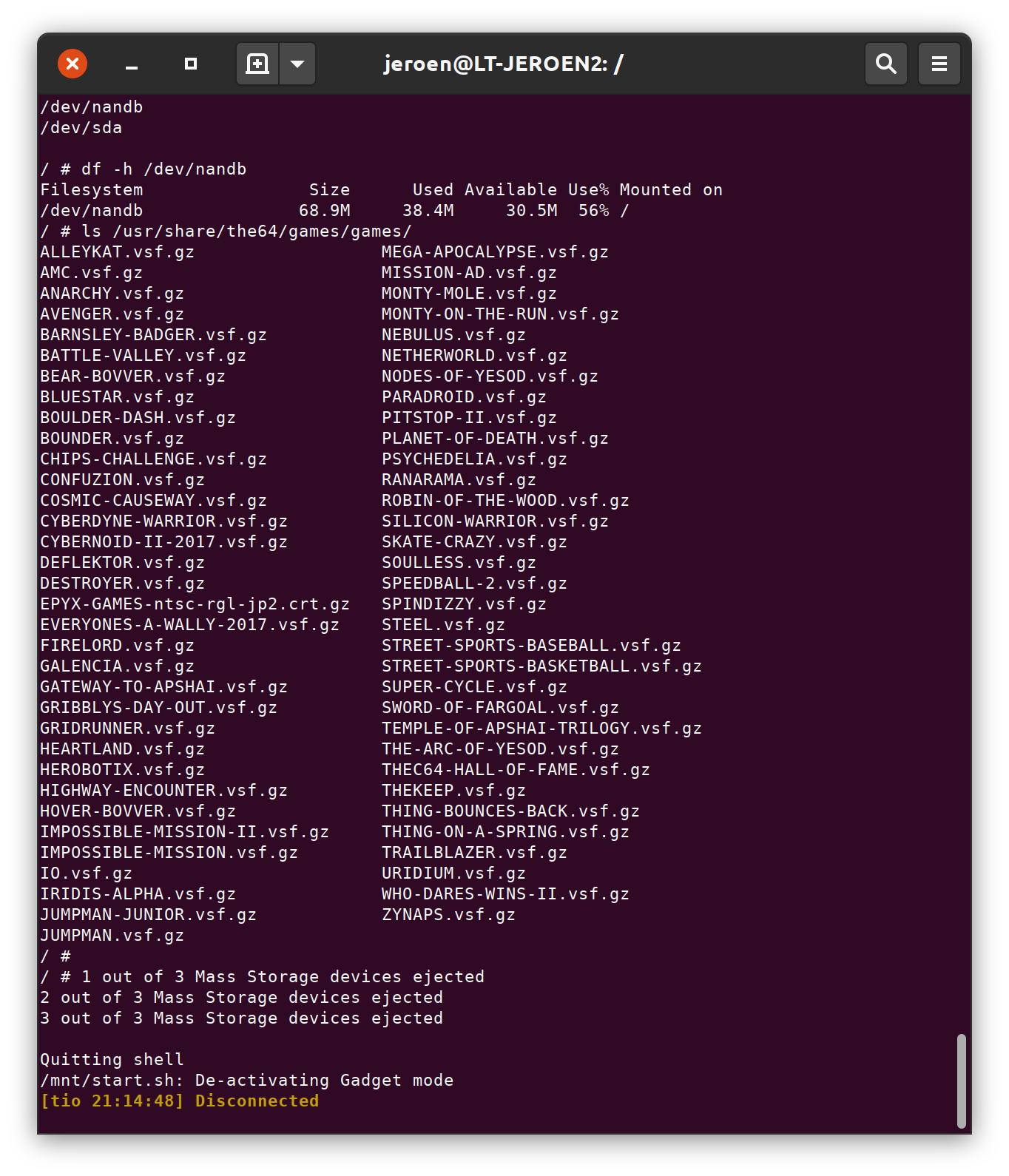 Some notes on filesystem integrity/safety:
Some notes on filesystem integrity/safety:
Enjoy and please let me know how it works for you.
The attached fake firmware file enables this so you can e.g.:
- Execute Linux commands on the Maxi
- Make backups of nanda and nandb and restore them from your PC with your favourite disk imaging tool
- Explore the nandb root filesystem from your PC if your OS supports the ext4 filesystem
This is easy in Linux, for Windows you need to search for an ext4 driver (which is read-only) or maybe use the 'Windows Subsystem for Linux' v1 or v2
USE THIS AT YOUR OWN RISK - I've tested in on my Maxi without issues but your results might vary. Ensure that the first thing you do is to make a backup of your nanda and nandb.
To run this:
- Extract the 7z file to an USB stick that you know works on the Maxi
- Connect the Maxi from it's back USB A port (normal size, not the micro USB port you usually power it from) to a USB (also A) port on your PC
- Switch on the Maxi and verify that it works and receives enough power from your PC. If it doesn't you can try to power it from the micro USB as well, but as I'm not an electrical engineer I'm not sure if there are unwanted side effects powering it this way
- Run the fake upgrade from the System Information menu
Once you run it, a number of things should happen:
- You will see the following message on the TV

- Your PC should announce three new Mass Storage devices. One will be 17MB which is nanda and one will be ~197MB which is nandb. It will also announce the USB stick that you inserted in the Maxi. For example, this is what I see in the Disks utility in Linux (the 2TB disk is my internal disk).
nanda, this is not a filesystem but an Android bootimage so it's shown as 'Unknown':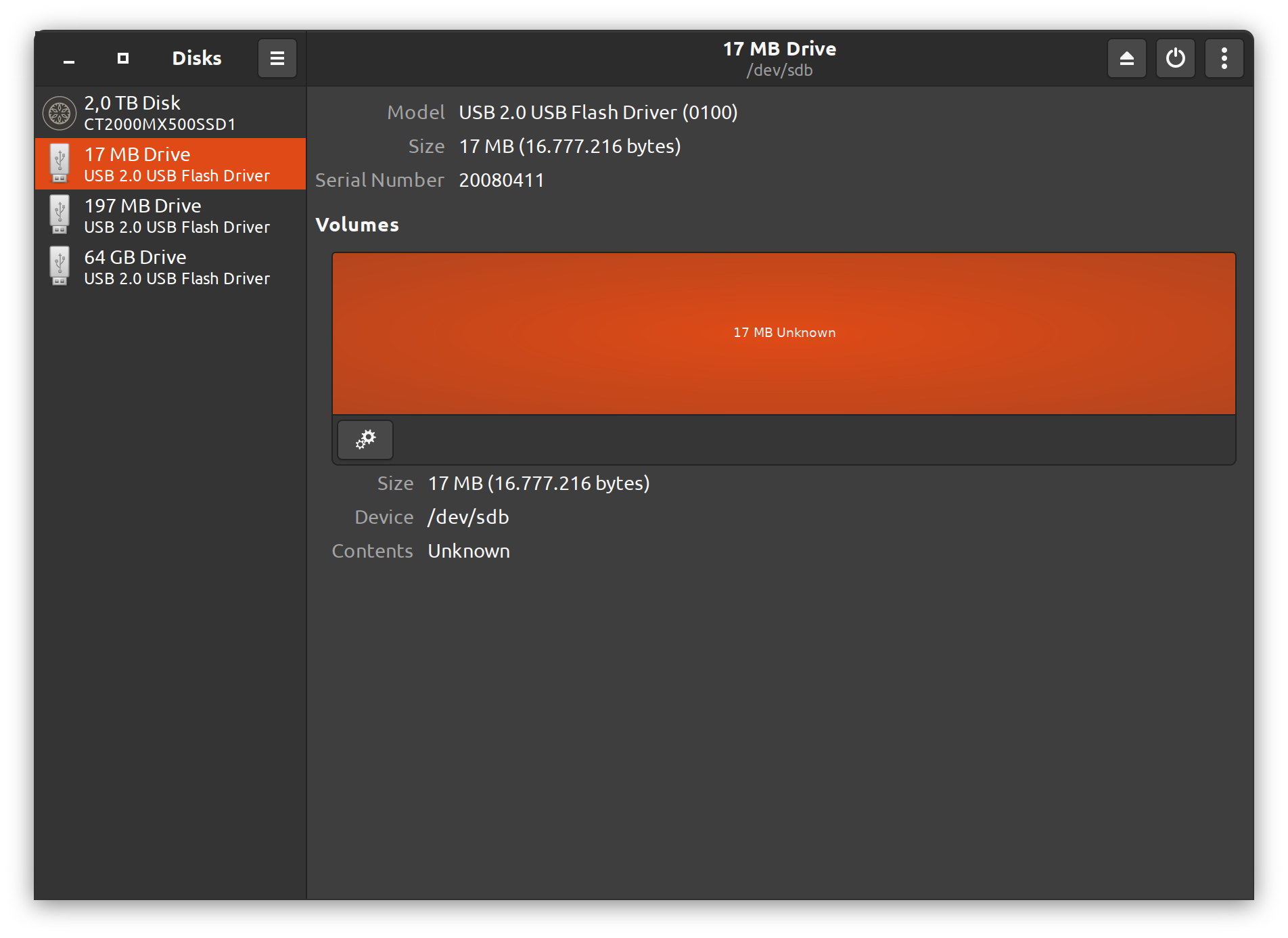
nandb, this contains an ext4 filesystem. Note that nandb is 197MB but in fact the actual size of the ext4 partition is only 69MB. The rest is probably left empty in case of errors on the nand.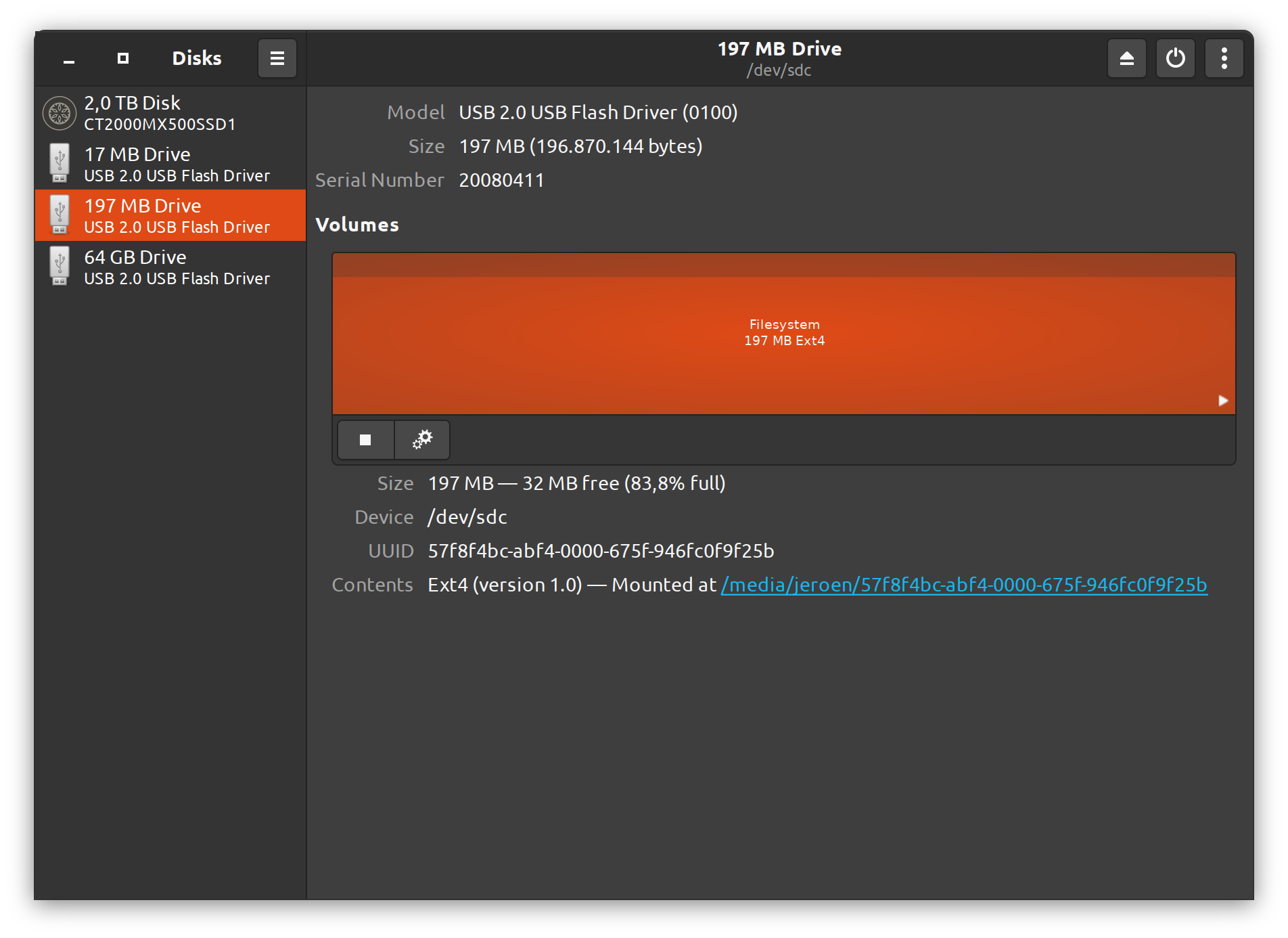
The USB stick I used on the Maxi, which has two partitions and a lot of empty space: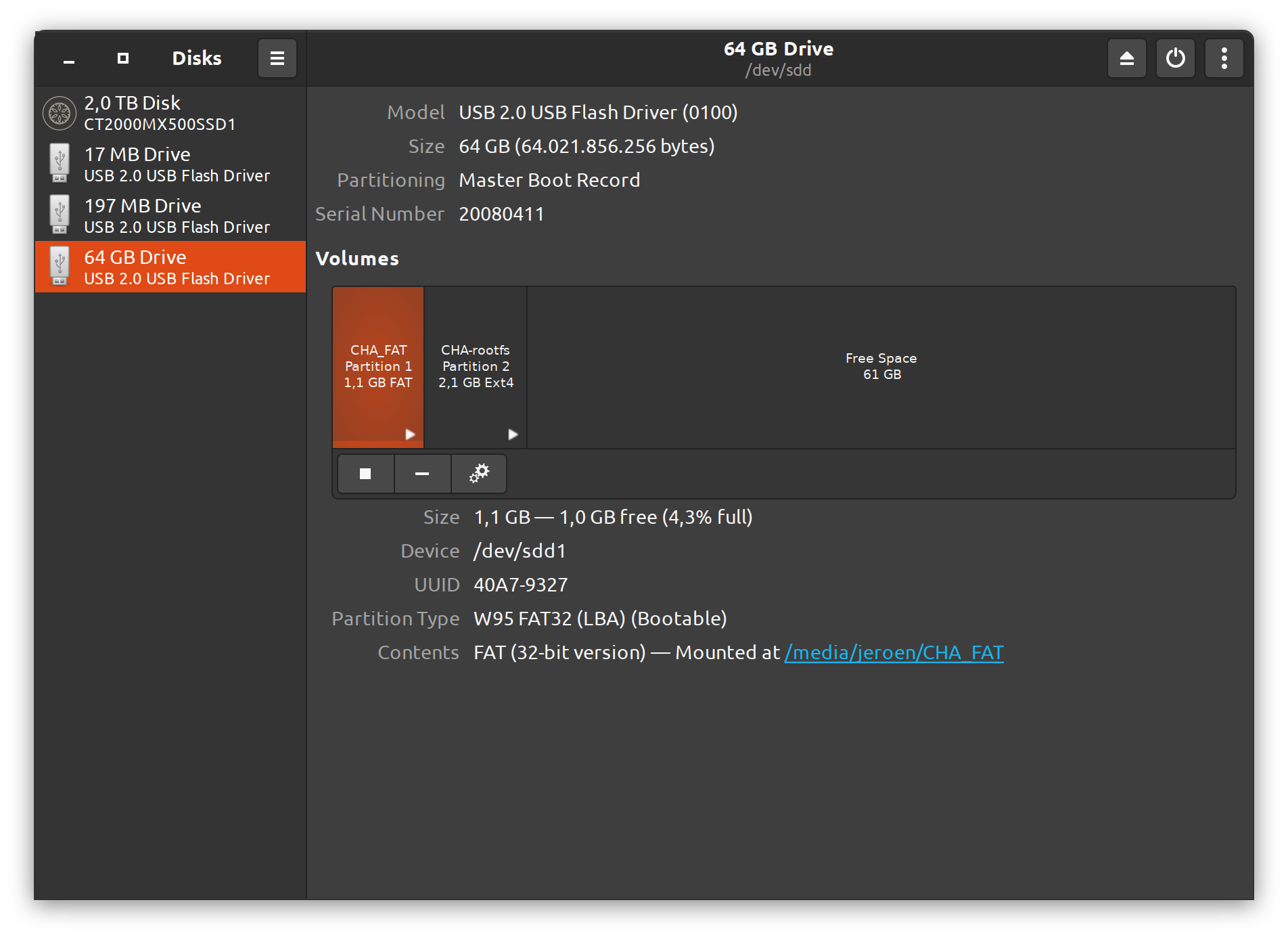
- Your PC should also have a new (virtual) serial port. On linux this will be /dev/ttyACM0, on Windows a COMx port. Note you might need to install the USB CDC driver if you're not on Windows 10. You can connect to this serial port with e.g. screen or tio in Linux, or Putty in Windows with parameters 115200,N,8,1. Once you connect you will see some information about how many Mass Storage devices are shared and you can press ENTER to activate the command line shell (which I did and I executed some commands):
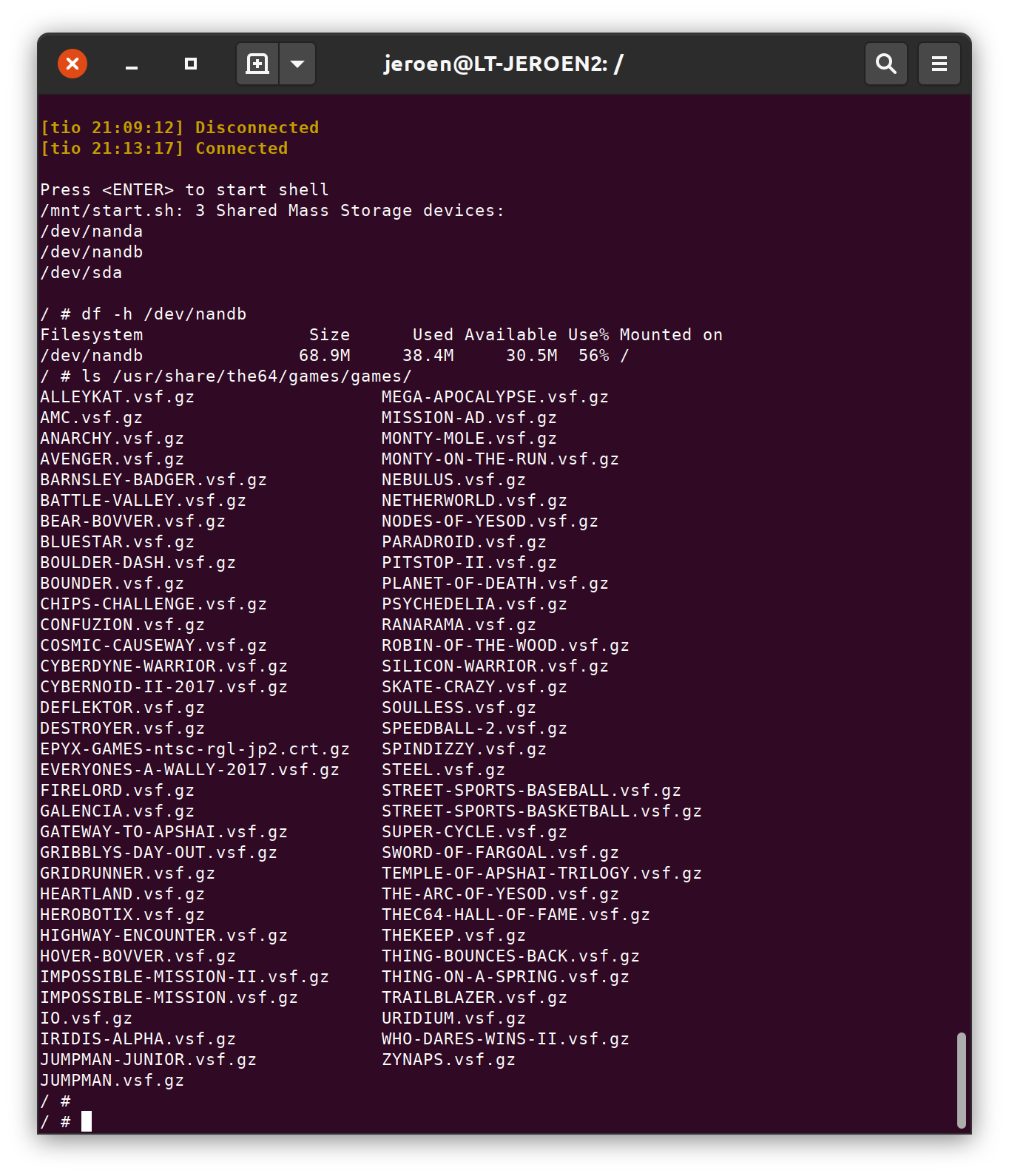
Note that the actual size of the rootfs is 68.9MB whereas the size of nandb is 197MB
For Windows (thanks @spannernick) it looks like this:
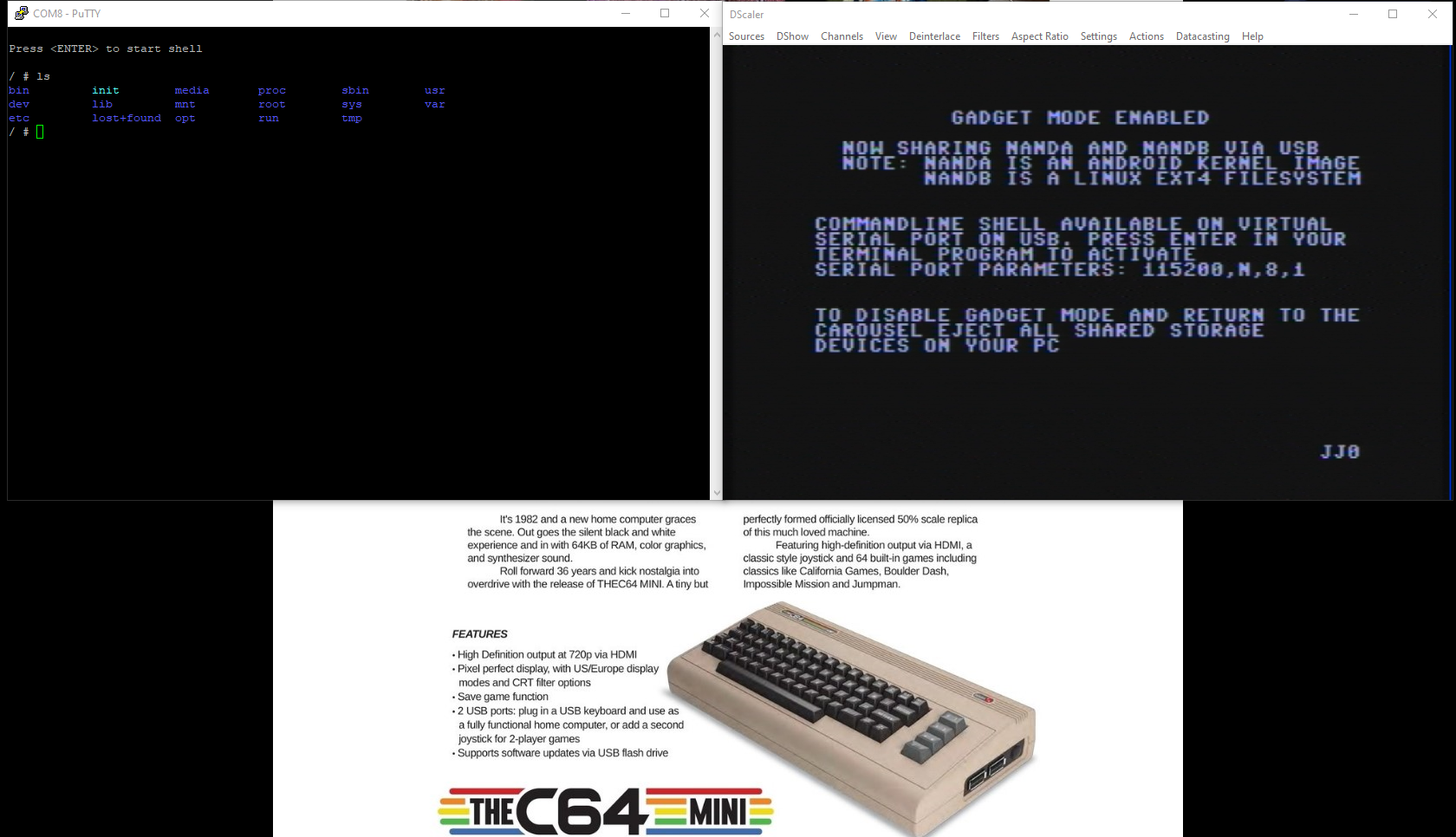

Sometimes the virtual serial port doesn't quite catch all start messages so you might see some garbled text.
To quit the OTG mode and return to the Carousel you have to (safely) eject each Mass Storage device, the command shell will show how many you have left to eject:
 Some notes on filesystem integrity/safety:
Some notes on filesystem integrity/safety:- The 'the64' Carousel program is killed before activating OTG mode so it doesn't interfere
- The root filesystem / is remounted read-only so no changes can be made from the Maxi side
- After leaving OTG mode the script remounts both root (/) and /mnt to ensure that changes you have made are recognised. However the safest way is still to reboot.
- You can run the fake firmware update file multiple times though at some point the virtual serial port will not work
Enjoy and please let me know how it works for you.






